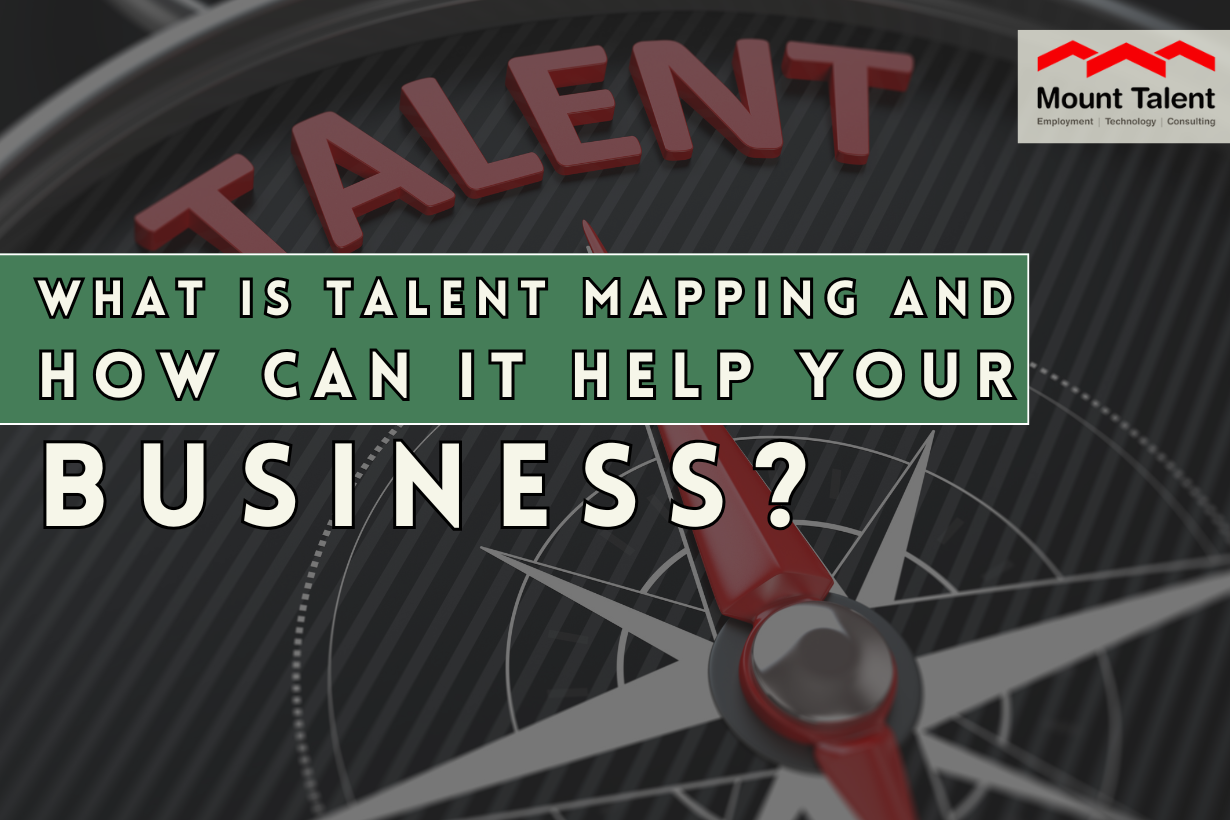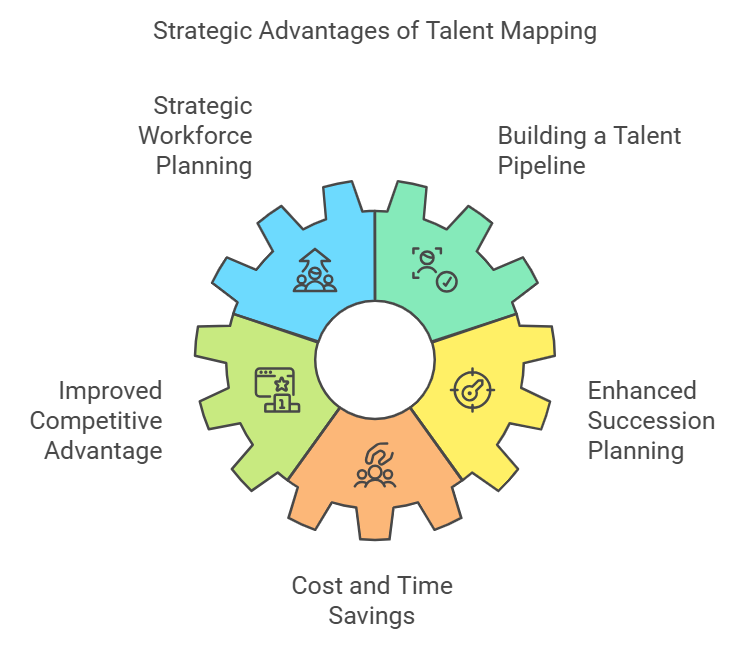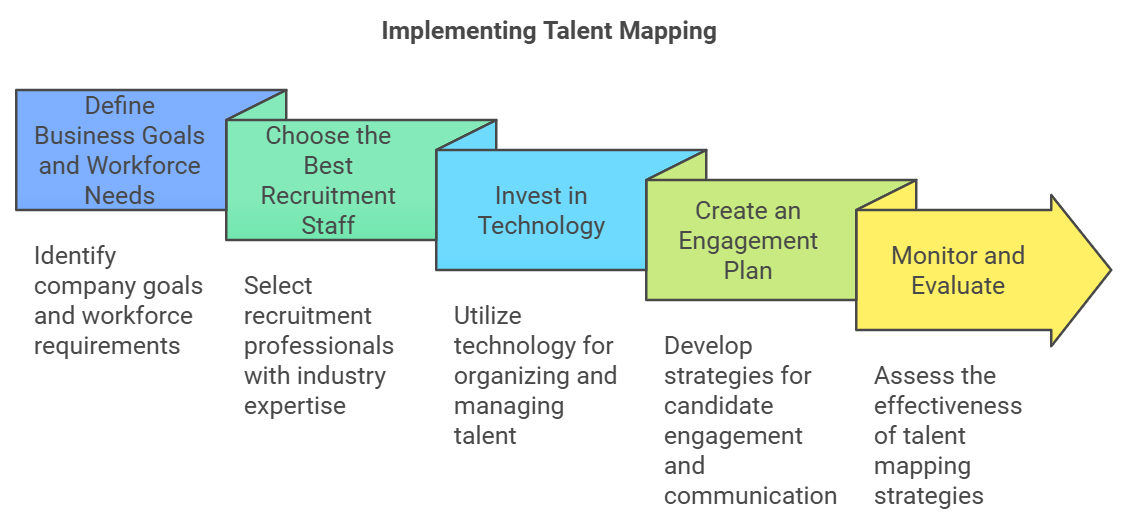
What is Talent Mapping and How Can It Help Your Business?
- by Mayank.Thapa
In today’s business world, there is nothing more important than the ability to attract and maintain talented employees. Another useful approach that the companies are practicing to compete notably is talent mapping. This is a strategic process as it assists the business to make projections on the talent it will require in the future, and do a scout of the market in search of talent. To this end, this article seeks to define talent mapping as well as the virtues attributable to this characteristic recruiting method, including how talent mapping and market mapping recruitment interact.
Understanding Talent Mapping
Talent mapping is a proactive process of developing a match- between organizational needs and suitable candidates who can fit into a particular position in an organization. Unlike the staff acquisition technique, which involves the process of seeking qualified candidates to fill current vacancies, talent mapping involves consideration of future shortages and envisages the strategy of the search for the candidates. It enables companies to screen out potential employees so that they can have an advanced idea of who needs to be hired to meet the company’s strategic plans and growth objectives in the talent pipeline.
How Talent Mapping is Different from Talent Acquisition
Traditional recruitment on the other hand is always defensive, companies only seek candidates when they’ve got an open post. In contrast, mapping talent can be considered an active approach. This comprises profiling the market with regard to talent and putting in place a pool of strong prospective performers. This approach is frequently used together with so-called ‘market mapping recruitment’, which allows companies to study market trends, competitors, and the distribution of available talent.
Key Differences:
- Timing: While recruiting is conventional and conventional, talent mapping is unconventional and proactive.
- Scope: Recruitment is event oriented whereas talent mapping looks at long-term requirements.
- Strategy: Talent mapping includes market mapping recruitment to identify where the talent exists in the entire sector.
Benefits of Talent Mapping for Businesses

1. Strategic Workforce Planning
Talent mapping assists an organization in understanding the skills and positions that it will require in the future in order to develop a strategic plan. What Market Mapping Recruitment Provides. Companies can also learn where such skills exist and what strategies rivals are employing. It is effective because it enables organizations to create specific plans that will secure talented employees.
2. Building a Talent Pipeline
Another benefit of talent mapping is the level of possibility to build up a pool of potential candidates. Rather than having to search for talent and nationwide recruitment, hiring managers get a ready workforce that fits the organization’s requirements. This talent pipeline guarantees that difficult and strategic roles in an enterprise are well-staffed and organized.
3. Improved Competitive Advantage
Market mapping recruitment also helps an organization to learn how their competitors are holding their company and where they get their employees from. This information is useful for knowing the tendencies in the given field and being prepared to stand out as an employer. Identified excepted talent mapping can help the companies to bring better talent from the market who may otherwise join the competitor organizations.
4. Enhanced Succession Planning
By doing talent mapping, can be beneficial for the recruitment of internal and external talents that can lead an organization. That proactive approach to succession planning allows for maintaining the continuous staff turnover of important positions and, thus, minimizing the effects of adversative staff turnover. It assists organizations in leadership development to reflect business goals and objectives through talent mapping.
5. Cost and Time Savings
Although talent mapping may seem like one has to incur some certain cost at a certain time, the reality is that it can save one a lot of money in the long run. This means that from a pool of highly skilled and qualified applicants, the organization can weed out unsuitable candidates, saving time and or costs when recruiting since the candidates would have already been pre-screened. Further, market mapping recruitment is helpful for succeeding in engaging qualified candidates, thus improving recruitment results.
Components of an Effective Talent Mapping Process
Market mapping recruitment especially when adopting talent mapping is associated with several factors that when properly performed create a strong foundation of a successful talent mapping strategy.
1. Role and Skill Analysis
The first in knowledge mapping is assessing the current and future positions. The key defining skills, experiences, and competencies needed in each position must be determined by the companies. When specifying such requirements, organizations can develop the best talent mapping strategy that will focus on skilled candidates.
2. Market Research and Competitor Analysis
Market mapping recruitment means getting information about competitors and what areas they are getting talents from. By recognizing competitors’ strategies, organizations are able to have more appropriate employment techniques and be more desirable in the labor force marketplace.
3. Candidate Identification and Segmentation
When the target roles and competitors are determined talent mapping includes categorization of potential contenders. It could combine existing employees with previous experience in the implemented roles, talented employees coming from other organizations’ different departments, or current employees who are owed a promotion. This argument is that segmentation targets those individuals whom the organization will benefit most in terms of performance.
4. Engagement and Relationship Building
Talent mapping means interacting with prospects for a position, even if at the moment there are no openings. By developing relations and creating communication with those people, companies can keep these people interested in the next jobs. It is a relationship-building approach that makes sure that the candidates are fully conversant with the company to ensure that when a suitable position is available they join the company.
5. Continuous Review and Update
Talent mapping is a progressive activity in that it needs to be revised frequently. Market mapping is a recruitment strategy that is effective for the first years of a business venture or branch start-up. As the market continues to grow and business begins to adapt to its altering needs and demands, the strategy has to be redone. This is particularly essential in (ordering) organizations to continually review their talent pipeline as they seek to employ the best in order to sustain growth and development.
How to Implement Talent Mapping in Your Organization

1. Define Business Goals and Workforce Needs
The first process in executing talent mapping involves the identification of the company’s goals and needs for the workforce. Determine some major positions that are important to contribute to these goals and think about which positions may be required in the near future according to the business development strategies or plans.
2. Choose the Best Recruitment Staff
The acts of market mapping recruitment could also be quite advantageous for the companies that are going for recruitment firms. They understand the industry you are working in, and have appropriate databases to tap into to give you a breakdown and recommended candidates. To develop a firm and complete talent mapping plan, organizations must engage professionals.
3. Invest in Technology
Talent mapping is currently very much technology-driven. One of the critical technologies applied in organizing candidates’ information is an applicant tracking system, data analytics, & AI tools. These tools include the tracking of trends in the industry and management of talent pools, and the efficient implementation of the market mapping recruitment strategy.
4. Create an Engagement Plan
Identifying potential candidates for engaging in various projects is the concept of talent mapping. Create a strategy on how to update them on current developments in the company, general market information, and of course vacancies available. That is why constant communication and working on relationships will help these candidates pay attention to your company in case they are looking for a change.
5. Monitor and Evaluate
In the case of talent mapping, it will be helpful to assess the effectiveness of your approach through important recruiting status indicators like time-to-hire and quality-of-hire indicators and candidate satisfaction levels. It is also advisable to adapt the formulated strategy in order to retain its correspondence to market tendencies and the company’s objectives.
Conclusion
Talent mapping is a general approach, which can be used to organize talent acquisition for future job openings, find a talent pool, and gain an edge in the market. Organizations can use market mapping recruitment to reverse engineer many features of the market including the current trends, talent demand by competitors, the overall market, and make informed hiring decisions. Talent mapping gives the outlook and framework needed for organizational leaders who are seeking to improve the way they attract talent so that their organizations can grow. For more details on how talent mapping may be used by your business, please go to mounttalent.com where you will find more resources and information.
Frequently Asked Questions
- What is talent mapping?
Answer: When choosing a talent mapping technique, an organization aims at finding potential employees for certain positions in the company in the future, making recruitment less reactive.
- How does talent mapping differ from traditional recruitment?
Answer: The traditional approach to recruitment is for the company to seek people to fill current positions, while talent mapping is strategic, looking many years ahead with respect to the company’s requirements.
- What is the meaning of market mapping recruitment?
Answer: Market mapping recruitment is the process of assessing what trends are in the industry, the conditions of the competitors, and market distribution in selecting candidates.
In today’s business world, there is nothing more important than the ability to attract and maintain talented employees. Another useful…
